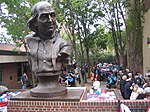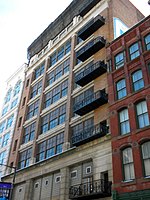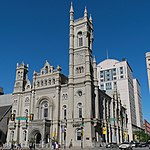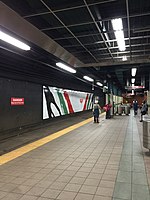Justice Juanita Kidd Stout Center for Criminal Justice

The Justice Juanita Kidd Stout Center for Criminal Justice (formerly the Criminal Justice Center or CJC), is a courthouse in Philadelphia, Pennsylvania. It is the main criminal courthouse of the First Judicial District of Pennsylvania (which comprises Philadelphia), housing the Criminal Section of the Philadelphia Court of Common Pleas and the Criminal Division of the Philadelphia Municipal Court. The CCJ is a 17-story steel-framed building completed in 1994 in order to alleviate pressure from courtrooms located in Philadelphia City Hall. The center is located at 1301 Filbert Street. In May 2012, the Criminal Justice Center was renamed in honor of the late Justice Juanita Kidd Stout.
Excerpt from the Wikipedia article Justice Juanita Kidd Stout Center for Criminal Justice (License: CC BY-SA 3.0, Authors, Images).Justice Juanita Kidd Stout Center for Criminal Justice
Filbert Street, Philadelphia Center City
Geographical coordinates (GPS) Address Nearby Places Show on map
Geographical coordinates (GPS)
| Latitude | Longitude |
|---|---|
| N 39.953709 ° | E -75.161622 ° |
Address
Philadelphia Justice Center
Filbert Street 1301
19107 Philadelphia, Center City
Pennsylvania, United States
Open on Google Maps









